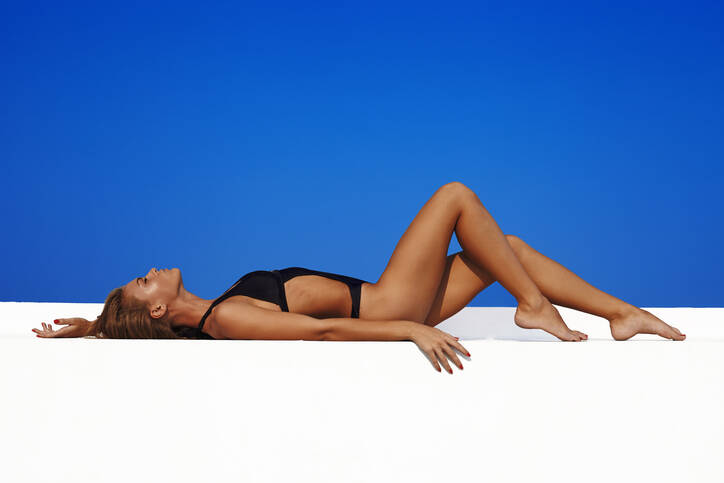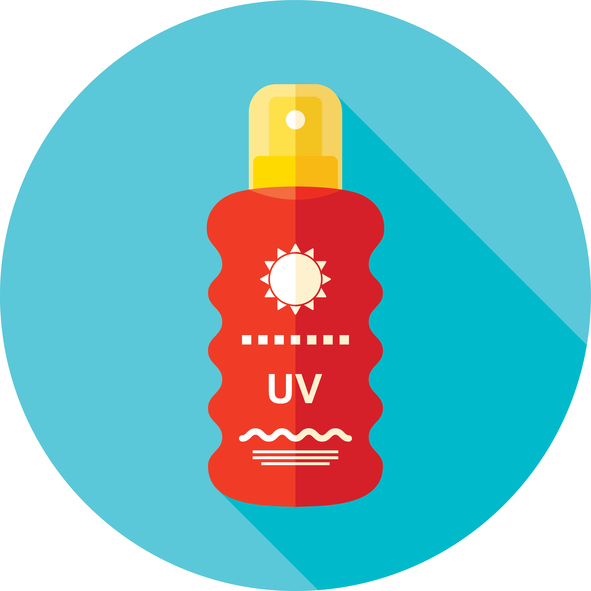- solen.cz - tanning
- nice.org.uk - Sunlight exposure: risks andbenefits
- cancerresearchuk.org - How does the sun and UV cause cancer?
- hopkinsmedicine.org - Sun Safety
- hse.gov.uk - Skin at work: Outdoor workers and sun exposure
- cancer.gov - Sunlight
Beautifully tanned skin and our health: how to get a healthy tan?

Summer and beautifully tanned skin tinted a luxurious bronze go together. However, getting the look of healthy tanned skin without any adverse effects, either on the skin itself or the whole body, requires certain rules and guidelines.
Article content
Tanning or sunbathing once and now
Not only in the past, but even nowadays in some countries the colour of the skin corresponds to the social class. In the 1920s in Europe and America, tanning was undesirable. This was because it was identified with people of the lower classes who worked outside.
Nowadays, women in East Asia, for example, prefer lighter skin. It means it's easier to get married, get a better job or a better position. There are even reserved seats on some trains for people with white skin.
So while the market here is crowded with tanning products or creams to enhance the tan, in Southeast Asia it's hard to find a cream without whitening effects.
What happens to us when we tan?
We can see for ourselves that the sun warms us up and gives us positive energy. It increases the production of vitamin D. It can also improve skin resistance, wound healing and fracture healing in many cases.
But on the other hand, it can cause reddening of the skin, thickening of the skin, drying, deepening and formation of wrinkles, pigment spots and, last but not least, it is important to think about sunburn and overheating of the body.
Interesting articles in the magazine:
Do you love the sun, but are you worried about pigment spots?
Sunburn, sunburn - summer, sun, heat, water and our health
The effect of vitamin D on the human body
Vitamin D, in addition to ingesting certain foods, is obtained through ultraviolet rays. These, once they reach the skin, trigger its synthesis.
The positive effects of vitamin D:
- contributes to bone and dental quality
- strengthens the immune system
- helps in the treatment of certain skin diseases such as psoriasis
- may partially prevent the formation of cancer cells
- reduces the risk of diabetes
- during pregnancy it contributes to the proper development of the fetal skeleton
- prevents low birth weight
- promotes milk production during lactation
- aids the absorption of vitamin A
- helps in the treatment of conjunctivitis
- vitamin D deficiency is responsible for depressed mood and increased fatigue
Reaction of defence mechanisms in the body
When we are exposed to sunlight, our body starts to produce a hormone that promotes the formation of pigment or melanin in the cells. The skin surface darkens with the formation of melanin, resulting in tanned skin.
Melanin absorbs UV rays. This protects the nuclei of cells from DNA damage and therefore from the possible development of cancer.
Of course, the skin's ability to adapt and defend itself against the damaging effects of sun exposure depends on many factors. From redness to sunburn to sunstroke, too much sun can cause other unpleasantness.
When melanocyte production is excessive, various pigmented spots form. When melanocyte division is uncontrolled, melanoma results.
The table shows the distribution of UV radiation
| UVA | UVB | UVC |
|
|
|
Factors that affect UV resistance:
- Skin phototype
- degree, intensity of exposure to the sun
- use of sunscreens
- clothing
- general health
- use of medication
- hydration
- diet
Skin phototypes are listed in the table below
| Phototype | Description |
| Phototype 1 |
|
| Phototype 2 |
|
| Phototype 3 |
|
| Phototype 4 |
|
What to keep in mind when in the sun
If you're going sunbathing, there are some recommendations to keep in mind. Diet, sunscreen or a drinking regime can help.
Diet
Include foods rich in beta-carotene in your diet before sunbathing, preferably for a few days or weeks. Carrots contain the most beta-carotene, but it is also found in spinach, yellow and red peppers and berries.
Don't forget to drink, not only while you're tanning, but also before (your skin needs to be prepared and hydrated). Otherwise, you'll contribute to dry skin, wrinkles and ageing.
If you are going to the seaside, you should skip the sunbed as a preparation for your skin, as it is an unnecessary burden on the body. Information is also provided in the magazine article on sunbeds.
Sun protection and sunscreens
Make sure you choose the right sunscreen. The phototype of your skin, your expected time in the sun, your age and the climate are decisive.
There are many products on the market with different sun protection factors, known as SPF (sun protection factor). This is the ability of the product to intercept harmful UV rays.
If you have a skin phototype of 1-2, definitely reach for SPF 50, 50+ or avoid the sun altogether if possible. For a tanned skin effect, use self-tanning creams instead.

If you are going to the water, prefer products that have a waterproof formula.
If you are in the sun for a long time, for example at concerts, festivals, outdoor events, try to protect yourself by choosing the right clothes. Clothes should be light, airy. Protect your shoulders. Don't forget your headgear (hat, scarf...), UV-filtered glasses, lip balm.
Don't underestimate short exposure to the sun, for example on the way to work. Be careful when taking certain medicines, contraceptives, antibiotics. Always consult your doctor or pharmacist about the effects of the sun in combination with the medicines you are currently taking.
Important warnings
Avoid the sun between 11am and 3pm.
Remember that it can tan or burn you even in the shade.
What about tanning during pregnancy?
During pregnancy, sunbathing is not completely out of the question. However, it is important to remember that there is more blood circulating in the body and the body temperature rises.
Therefore, the body is more susceptible to overheating and burning. There is also a risk of folic acid depletion, which can result in the development of certain developmental defects.
Risks of sunbathing in children
Children love the summer and the sun, so it is sometimes impossible to keep our restless little ones safe in the shade. This makes it all the more important to take care of prevention, to use a good quality sunscreen with an SPF of at least 50, and to dress and drink well. In any case, we try not to expose children under 3 years of age to direct sunlight.

Many manufacturers state on their products that they are waterproof or have an effect of several hours. Many factors influence these properties and can change their effect and quality.
Let's look at all the summer problems together:
Our health in summer - sun, heat, injuries and illness
Video: Why do we have to wear sunscreen? - Kevin P. Boyd
Interesting resources
Related










